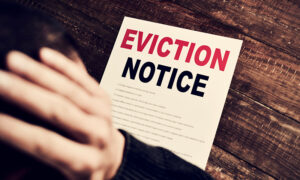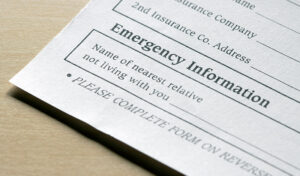Cash is a popular way to collect rent in the United States. However, while it may be liquid, cash payments are not always reliable. Renters may easily default on the payment. They are also prone to human error. What other rent payment methods should landlords consider?
Why Offer Other Rent Payment Methods?
Offering various landlord rent payment methods provides many benefits for both the landlord and tenant. Here are some reasons why it’s a good idea:
- Convenience. Other rent payment methods are more convenient than cash because tenants do not need to visit the landlord regularly to make payments.
- Security. Other payment methods are more secure for both the landlord and tenant. Meanwhile, cash is prone to theft and loss.
- History. Other payment methods provide a digital trail landlords and tenants can track to ensure payments have been made.
- Reduced Administrative Work. Non-cash methods allow landlords to process payments faster. They also require less or no reconciliation work on the landlord’s part.
- Less Risk of Late or Missed Payments. Non-cash methods are easier to track and reduce the likelihood of missed or late payments.
Other Rent Payment Methods to Consider
What other rental payments methods should landlords consider? Here are the best payment methods to try.
1. Cashier’s Check or Bank Draft
 Landlords who want physical rent payment methods for tenants can consider cashier’s checks and bank drafts. The tenant only needs to obtain these from financial institutions like credit unions or banks. Afterward, the institution will write the bank draft or cashier’s check against their funds instead of the renter’s funds. This guarantees that the landlord will receive the money as cashier’s checks and bank drafts do not bounce.
Landlords who want physical rent payment methods for tenants can consider cashier’s checks and bank drafts. The tenant only needs to obtain these from financial institutions like credit unions or banks. Afterward, the institution will write the bank draft or cashier’s check against their funds instead of the renter’s funds. This guarantees that the landlord will receive the money as cashier’s checks and bank drafts do not bounce.
Cashier’s checks and bank drafts require the tenant to have the rent amount on hand. The bank or financial institution takes the money from the renter’s account before they issue the cashier’s check or bank draft, making it secure for all parties involved. However, banks and financial institutions charge a fee to issue bank drafts and cashier’s checks.
2. Certified Check
One of the best landlord payment options is the certified check. It’s similar to cashier’s checks in that a financial institution will verify whether or not the renter has enough money in their account. Once verified, the teller will certify the check with a signature or stamp. Certified checks are secure because they guarantee the landlord will receive the funds. However, they also cost money to obtain.
On the other hand, certified checks are not as secure as bank drafts and cashier’s checks. This is because they only certify that the account has enough funds upon writing. It does not always guarantee that the funds are available upon withdrawal. Nevertheless, many banks hold the amount to ensure the check clears.
3. Money Order
Money orders are one of the most secure physical rent payment options. Renters can get them from banks, convenience stores, groceries, pharmacies, payday loan stores, check-cashing stores, and the United States Postal Service (USPS).
With this method, the institution will write both the landlord’s and renter’s names on the money order and include the issuer’s name. Tenants must prepay the money with a guaranteed payment method like a credit or debit card. The landlord will then simply collect the money prepaid to the issuer.
Money orders are secure because they are prepaid and cannot bounce. They’re like a gift certificate the landlord can cash in once rent is due. However, issuers often charge fees for money orders, which can be cumbersome and financially impractical for renters to use.
4. Bank Transfer
Electronic payment methods are convenient for both the renter and landlord. They eliminate the need to meet and exchange documents or cash physically. For this reason, the bank transfer rent payment has become popular among many landlords and tenants. Bank transfers are similar to direct deposits in that money is transferred from one bank to another.
5. Cash App or Venmo
Online rent payment options like Venmo and Cash App are ideal for many younger tenants. This is because many millennials and Gen Z use these apps for most transactions. It’s convenient, intuitive, and often quick. Moreover, it’s usually entirely secure because these apps offer transaction encryption.
In addition, landlords can easily send payment requests to tenants using these apps. These may serve as reminders to tenants to pay their rent on time. Some apps also allow renters to set up automatic payments so they never miss a deadline. However, keep in mind that business transactions like these may come with a fee.
6. PayPal
 PayPal for rent collection has become a popular choice for landlords. This is because PayPal is relatively universal and even works with international clients. When using PayPal, renters only need to enter their landlord’s phone number and email address to transfer funds. They can do it at their convenience and without having to ask for the landlord’s bank details.
PayPal for rent collection has become a popular choice for landlords. This is because PayPal is relatively universal and even works with international clients. When using PayPal, renters only need to enter their landlord’s phone number and email address to transfer funds. They can do it at their convenience and without having to ask for the landlord’s bank details.
In addition, PayPal often charges no fees for transfers via digital wallets and bank accounts. This makes it convenient to use PayPal to collect rent. On the other hand, keep in mind that the app may charge fees for credit and debit card payments.
Exercise Caution When Using Online Payments
Landlords who want to use online rent payment methods should exercise caution. While it’s tempting to list the renter as a “family or friend” to avoid business transaction fees, these types of payments often come with few protections. It may be wiser to designate these payments as business transactions to ensure they cannot be easily reversed or canceled.
Moreover, designating professional transactions as personal transfers may violate the platform’s terms and conditions. The landlord may eventually face liability if they are dishonest with their transactions.
Better Flexibility for Landlords and Tenants
Non-cash rent payment methods offer more flexibility for both landlords and tenants. Some of these payments offer more security for the landlord and guarantee that they will receive the payment. Meanwhile, others are convenient for both parties and no longer require them to meet physically.
Are you in need of a property management company to manage your rental properties? Find one today through our online directory!
RELATED ARTICLES:
- Why Decline A Tenant And How To Do It The Right Way
- Can Tenants Get The Boot When Smoking In Apartments?
- Fair Housing Violations Landlords Should Steer Clear Of



 What credit score do landlords look for? In truth, there is no set credit score landlords look for. While high credit scores are preferable for most landlords, tenants do not need an unreasonably high score just to rent a property. However, what they might need to think about is whether or not their credit score is too low.
What credit score do landlords look for? In truth, there is no set credit score landlords look for. While high credit scores are preferable for most landlords, tenants do not need an unreasonably high score just to rent a property. However, what they might need to think about is whether or not their credit score is too low. 4. Opt for Tenant Screening Services
4. Opt for Tenant Screening Services 1. Low Credit Score
1. Low Credit Score 7. Incompatible Lifestyle With Rental Rules
7. Incompatible Lifestyle With Rental Rules Many states prohibit or restrict tobacco use around multiunit buildings because smoke can easily travel across shared spaces. State laws may even consider buildings with only two units as “multiunit buildings.”
Many states prohibit or restrict tobacco use around multiunit buildings because smoke can easily travel across shared spaces. State laws may even consider buildings with only two units as “multiunit buildings.” Is smoking grounds for eviction? It depends on several factors. Firstly, let’s assume the landlord has enacted a no-smoking policy as part of the apartment’s rules and regulations.
Is smoking grounds for eviction? It depends on several factors. Firstly, let’s assume the landlord has enacted a no-smoking policy as part of the apartment’s rules and regulations. Common Fair Housing Violations to Watch Out For
Common Fair Housing Violations to Watch Out For HUD housing violations
HUD housing violations  The first thing you should include on your landlord’s summer maintenance checklist is inspecting and cleaning the gutters. Gutters play an important role in redirecting rainwater from the unit’s siding, landscaping, and foundation. This is important because
The first thing you should include on your landlord’s summer maintenance checklist is inspecting and cleaning the gutters. Gutters play an important role in redirecting rainwater from the unit’s siding, landscaping, and foundation. This is important because  Proper outdoor maintenance and landscaping can help extend the lifespan of your property. Trim overgrown bushes, trees, and lawns to keep the property visible and safe. Plant native plants that are more resistant to pests.
Proper outdoor maintenance and landscaping can help extend the lifespan of your property. Trim overgrown bushes, trees, and lawns to keep the property visible and safe. Plant native plants that are more resistant to pests. The plumbing system needs regular evaluation and maintenance. Begin by checking all the faucets and sinks for signs of leaks and damage. Flush all the toilets to make sure they’re refilling and draining correctly. Likewise, look for signs of leaks at the base.
The plumbing system needs regular evaluation and maintenance. Begin by checking all the faucets and sinks for signs of leaks and damage. Flush all the toilets to make sure they’re refilling and draining correctly. Likewise, look for signs of leaks at the base. Landlords should conduct routine maintenance inspections on their rental properties. They should check for major damages or smaller issues caused by wear and tear. This also includes checking systems and making sure they are operational.
Landlords should conduct routine maintenance inspections on their rental properties. They should check for major damages or smaller issues caused by wear and tear. This also includes checking systems and making sure they are operational. Landlords are usually responsible for re-painting the property and ensuring the flooring is in good condition. Generally, landlords repaint properties after a tenant leaves. However, they can also repaint the rental home if enough time has passed.
Landlords are usually responsible for re-painting the property and ensuring the flooring is in good condition. Generally, landlords repaint properties after a tenant leaves. However, they can also repaint the rental home if enough time has passed. Square Footage Formula
Square Footage Formula How do you calculate real rental price? Landlords can often use the property’s overall worth to determine the base rental price. It’s a useful tool for landlords who don’t know where to start. Typically, the rental price of a property should fall between 0.8% and 1.1% of the home’s value. For example, if the home’s value is at $250,000, the rental price should be around $2,000 to $2,750 monthly.
How do you calculate real rental price? Landlords can often use the property’s overall worth to determine the base rental price. It’s a useful tool for landlords who don’t know where to start. Typically, the rental price of a property should fall between 0.8% and 1.1% of the home’s value. For example, if the home’s value is at $250,000, the rental price should be around $2,000 to $2,750 monthly. Even with a high property value or local rental rates, the overall demand might affect the rental price you can set. In a bad economy, there’s a higher demand for rentals as people are not able to afford housing. Small and cheap apartments will be in particularly high demand as people want to live somewhere affordable.
Even with a high property value or local rental rates, the overall demand might affect the rental price you can set. In a bad economy, there’s a higher demand for rentals as people are not able to afford housing. Small and cheap apartments will be in particularly high demand as people want to live somewhere affordable. It’s important to outline the fees and deposits you might ask the tenant for, such as pet deposits or parking fees. However, remember that some states have laws that limit the amount you can collect as a security deposit.
It’s important to outline the fees and deposits you might ask the tenant for, such as pet deposits or parking fees. However, remember that some states have laws that limit the amount you can collect as a security deposit. Emergency Contact. This can be helpful in emergencies. Ask for the contact’s name, number, and relationship to the applicant.
Emergency Contact. This can be helpful in emergencies. Ask for the contact’s name, number, and relationship to the applicant. Credit Reporting Laws
Credit Reporting Laws Despite the slowdown in rent growth, renter households are still more cost-burdened than ever due to the rental market overheating during the pandemic. Thus, there is a much greater need for rental assistance.
Despite the slowdown in rent growth, renter households are still more cost-burdened than ever due to the rental market overheating during the pandemic. Thus, there is a much greater need for rental assistance. Gen Z Driving Rental Demand
Gen Z Driving Rental Demand Company
Company